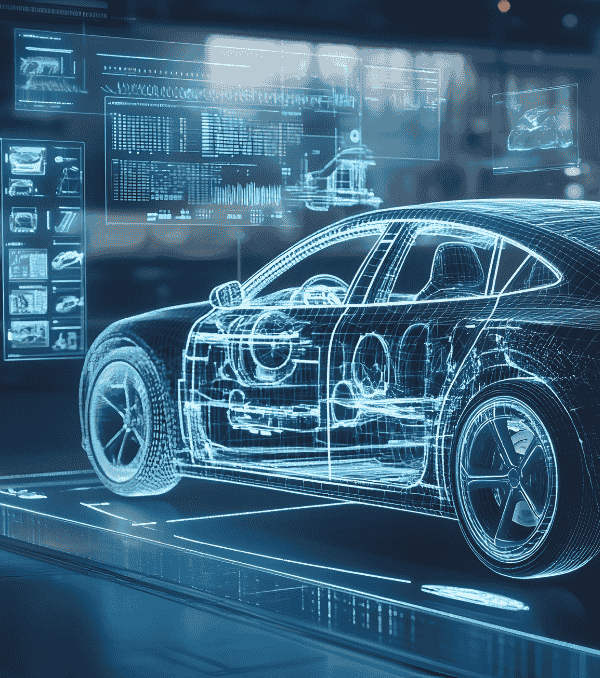

Accelerating Unit Testing using Generative AI
The significant impact of GenAI in accelerating unit testing processes in software development.
Blog.png )
.png )
System Testing and HILS
In the rapidly evolving automotive industry, data-driven systems demand rigorous validation for quality and reliability. As vehicles incorporate advanced features like ADAS, Infotainment, and V2X, testing complexity increases exponentially. System Testing and Hardware-in-the-Loop (HILS) methodologies mitigate risks, ensure compliance with dynamic regulations, and safeguard vehicle performance across diverse scenarios. They also optimize operational costs and reduce time-to-market.
Tata Elxsi delivers end-to-end testing solutions, supporting EV and HEV systems, autonomous functionalities, and cloud-driven testing. Our deep domain expertise ensures seamless integration of advanced test frameworks and test automation, empowering clients to stay competitive and aligned with emerging trends in sustainable mobility.
Business Challenge
The surge in connectivity, vehicle electrification, and regulatory mandates intensifies testing demands. Traditional approaches struggle with scalability, leading to higher costs, longer development cycles, and compromised consistency. Automotive players need robust test frameworks, offshore and remote testing capabilities, and diagnostic tools to address evolving complexities while ensuring flawless performance, regulatory compliance, and faster market launches. ADAS features amplify validation efforts.
Products and Services
Tata Elxsi delivers Test Automation & Solutions, Integration & Vehicle Testing, Hardware-in-the-Loop Simulation, Diagnostic & Functional Validation, System Behavioural Modeling, and Design of Experiments to streamline automotive product life cycles.
EV Testing Services | Cloud-Driven Test Ecosystem
What's New
Information Hub
-
What is the significance of System Testing and HILS in the automotive industry?
System Testing provides a holistic evaluation of vehicle E/E systems, ensuring they function reliably under real-world conditions. HILS (Hardware-in-the-Loop Simulation) brings real components into a virtual environment, allowing engineers to validate performance without risking costly physical prototypes. This approach helps identify design flaws, ensures regulatory compliance, and accelerates development cycles. By combining System Testing and HILS, OEMs minimize potential errors and deliver superior quality vehicles.
-
How can test automation enhance efficiency in automotive projects?
Test automation replaces repetitive manual checks with scripted processes, drastically reducing human error and boosting productivity. It also provides faster feedback loops, enabling quicker identification of defects. Engineers can allocate their time to complex tasks, while automated scripts handle large-scale, routine tests. Overall, test automation ensures consistent quality standards, lowers operational costs, and supports flexible scaling across various components, from Infotainment to ADAS systems.
-
What benefits does cloud-based testing bring to automotive validation?
Cloud-based testing offers on-demand resource availability, eliminating the need for hefty on-site test infrastructure. Teams can scale Hardware-in-the-Loop setups, run multiple test scenarios in parallel, and access real-time analytics through centralized dashboards. This model increases collaboration between global teams and streamlines data management, ensuring consistency and reliability. It also supports AI-driven insights, expediting root-cause analysis and reducing time-to-market for new vehicle systems.
-
How does Tata Elxsi address the need for EV and HEV testing?
Tata Elxsi provides Validation as a Service (VaaS) to expedite EV and HEV system checks at both component and system levels. Our ready-to-deploy test automation frameworks and plant models enable rapid prototyping and validation, helping automotive manufacturers minimize development risks. Through robust HILS setups and cloud-based testing ecosystems, we ensure scalability, accurate simulation of real-world conditions, and faster rollouts of electrified mobility solutions.
-
What are the future trends in automotive testing?
Future automotive testing will be driven by AI and machine learning for predictive analysis, helping to anticipate failures before they occur. Digital twins will simulate entire vehicle ecosystems, from powertrains to user interfaces, enabling comprehensive validation. As connectivity grows, cybersecurity testing will become critical. Additionally, sustainable practices will emerge, focusing on eco-friendly test labs, energy efficiency, and reduced carbon footprints throughout the testing lifecycle.





















